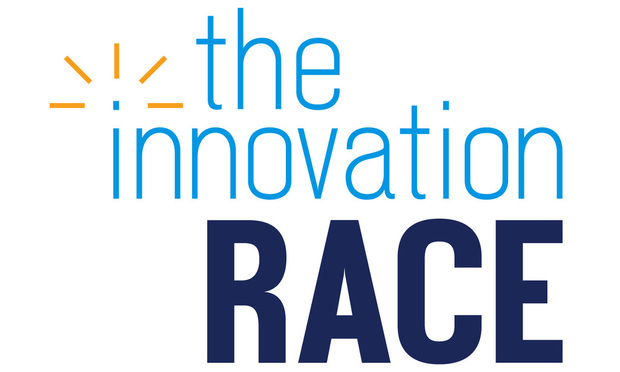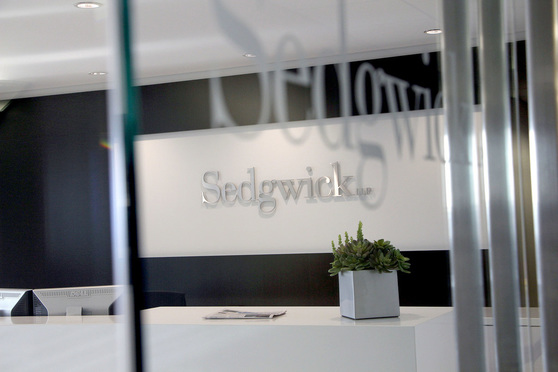Big Talk, Little Action? Survey Details Big Law 'Innovation Gap'
A new survey reveals that 81 percent of clients see "little" or "hardly any" innovation inside their law firms. Only 5 percent of clients are content. What gives?
March 28, 2018 at 06:45 AM
6 minute read

Talk of transforming the legal marketplace is often predicated on new or soon-to-be new technologies that promise to make the practice of law more efficient. Artificial intelligence will do better legal research. Knowledge management systems will put your best work product at your fingertips.
But for all this talk, a new survey suggests clients are seeing little, if any, change in how their law firm providers approach their work. And what change they are seeing is not the transformative kind that many firms and software providers like to talk about.
Thompson Hine, an Am Law 200 firm founded in Cleveland, commissioned the survey by asking in-house counsel and senior executives at 176 companies how much “innovation” they were seeing among their law firms. A mere 4 percent replied “a lot.” The vast majority—81 percent—replied “a little” or “hardly any.” And 15 percent said “none.”
When asked to cite specific “significant” changes in how law firms approached their work over the past three years, 70 percent of clients did not identify a single example. The most common response to that question: 9 percent of clients said “Improved communications or worked more diligently on relationships.”
 This is not to say that clients aren't interested in change. Only 5 percent said they were content with the status quo. The report calls the discrepancy between law firm promises and actual delivery “the innovation gap.”
This is not to say that clients aren't interested in change. Only 5 percent said they were content with the status quo. The report calls the discrepancy between law firm promises and actual delivery “the innovation gap.”
“The legal market now sits in an awkward and unsustainable position,” the survey concludes. “Most law firms remain mired in the practices of the past even though at least half promise and promote innovation. Corporate counsel hear all those well-intentioned promotions, but they don't see much action.”
So where should law firms focus their efforts?
That's not entirely clear from clients' responses about what they want, but cutting-edge technologies are not at the top of the list.
The largest single category where clients said they want to see improvements, asked for by a group of only 27 percent, was “fees, costs and budget issues.” That was followed by 13.5 percent of respondents asking for project management and another 13.5 percent seeking better staffing. A mere 9.5 percent of respondents said technology.
On the budgeting front, law firms have a long way to go, the survey suggests. Nearly half—45 percent—of respondents said they never receive budgets from law firms. One encouraging sign for clients, though, was that 15 percent of respondents said 100 percent of their law firms prepare budgets for them.
That suggests that clients who insist on behavioral changes from their law firms can achieve it, according to the survey.
But the results also raise another possibility: Is it that law firms don't need to close the innovation gap?
However dissatisfied clients may be, law firms are still the dominant provider of legal services to corporate America. The same Thompson Hine survey states that 82 percent of respondents had yet to retain a legal process outsourcing company. Of those, half said they were unaware of either LPO services or their value, while a quarter had not seen a reason to hire them.
But Thompson Hine managing partner Deborah Read, who commissioned the study as part of an effort to market the firm's project management and budgeting program known as SmartPaTH, said in an interview that law firms are facing other threats if they don't heed clients' calls for change. And she said “white noise” around innovation in the legal market is “hurtful” to law firms and clients alike who are interested in pursuing real innovation.

While there is a chunk of highly important legal work that is insensitive to price pressure, Read said clients who are dissatisfied with law firms will continue to pull the larger swathe of “operational” legal work in-house.
“They're taking that work in-house,” Read said. “And some general counsel or chief legal officers who are interested in innovating and doing more with less are innovating their own in-house departments and getting pretty good at it.”
Among law firms there is much talk of change, Read added, but clients often can't determine before engaging them what firms are actually providing real budgets, sticking to them and changing their staffing models. That can make clients skeptical of law firms at large, she said. And that shows up in something Read said she has seen in the market: Few clients are making purchasing decisions based on “innovation.”
“I think that is because there is not a lot of knowledge out there about who is really doing things differently,” Read said. “I do think firms now know that it's important to say, 'We're engaged in legal project management. We're engaged in budgeting. We're engaged in process efficiency.' They know that now. But I know it takes a long time to get people trained in the way to do this and shift in their approach.”
Read's firm has been traveling that path since shortly after she became managing partner in 2012, and Thompson Hine currently has more than 2,500 matters being budgeted through SmartPaTH. About 15 percent of its matters are engaged under alternative fee structures.
Thompson Hine's goal, Read said, is to budget as many matters as possible as lawyers at the firm continue to adopt the new behaviors that budgeting requires: Talking with a client upfront about the scope of a project; making cost-conscious decisions on staffing; and reporting progress to clients. The firm's technology, she said, is a tool to facilitate that behavioral change.
“It's not something you can wake up and put on your website,” Read said. “It takes a lot of time and effort. It's developing the tools that help affect the change. It's training your lawyers to make the change. Budgeting a matter; this is work.”
➤➤ Want more reporting on the evolving legal industry? Sign up here for The Law Firm Disrupted by Roy Strom. Each week, Roy offers a levelheaded discussion of trends rocking the legal sector, examines how industry leaders are coping (or not) and offers insight on the tactics and strategies of would-be disrupters.
This content has been archived. It is available through our partners, LexisNexis® and Bloomberg Law.
To view this content, please continue to their sites.
Not a Lexis Subscriber?
Subscribe Now
Not a Bloomberg Law Subscriber?
Subscribe Now
NOT FOR REPRINT
© 2025 ALM Global, LLC, All Rights Reserved. Request academic re-use from www.copyright.com. All other uses, submit a request to [email protected]. For more information visit Asset & Logo Licensing.
You Might Like
View All
Shut Out: SCOTUS Law Clerks Still Mostly White and Male

'Many' Sedgwick Lawyers to Join UK Law Firm in New Year
Trending Stories
- 1John Deere Annual Meeting Offers Peek Into DEI Strife That Looms for Companies Nationwide
- 2Why Associates in This Growing Legal Market Are Leaving Their Firms
- 3Visa's Defense of DOJ Antitrust Case Suffers Setback After Court Denies Motion to Dismiss
- 4Greenberg Traurig Combines Digital Infrastructure and Real Estate Groups, Anticipating Uptick in Demand
- 5Trump Administration Faces Legal Challenge Over EO Impacting Federal Workers
Who Got The Work
J. Brugh Lower of Gibbons has entered an appearance for industrial equipment supplier Devco Corporation in a pending trademark infringement lawsuit. The suit, accusing the defendant of selling knock-off Graco products, was filed Dec. 18 in New Jersey District Court by Rivkin Radler on behalf of Graco Inc. and Graco Minnesota. The case, assigned to U.S. District Judge Zahid N. Quraishi, is 3:24-cv-11294, Graco Inc. et al v. Devco Corporation.
Who Got The Work
Rebecca Maller-Stein and Kent A. Yalowitz of Arnold & Porter Kaye Scholer have entered their appearances for Hanaco Venture Capital and its executives, Lior Prosor and David Frankel, in a pending securities lawsuit. The action, filed on Dec. 24 in New York Southern District Court by Zell, Aron & Co. on behalf of Goldeneye Advisors, accuses the defendants of negligently and fraudulently managing the plaintiff's $1 million investment. The case, assigned to U.S. District Judge Vernon S. Broderick, is 1:24-cv-09918, Goldeneye Advisors, LLC v. Hanaco Venture Capital, Ltd. et al.
Who Got The Work
Attorneys from A&O Shearman has stepped in as defense counsel for Toronto-Dominion Bank and other defendants in a pending securities class action. The suit, filed Dec. 11 in New York Southern District Court by Bleichmar Fonti & Auld, accuses the defendants of concealing the bank's 'pervasive' deficiencies in regards to its compliance with the Bank Secrecy Act and the quality of its anti-money laundering controls. The case, assigned to U.S. District Judge Arun Subramanian, is 1:24-cv-09445, Gonzalez v. The Toronto-Dominion Bank et al.
Who Got The Work
Crown Castle International, a Pennsylvania company providing shared communications infrastructure, has turned to Luke D. Wolf of Gordon Rees Scully Mansukhani to fend off a pending breach-of-contract lawsuit. The court action, filed Nov. 25 in Michigan Eastern District Court by Hooper Hathaway PC on behalf of The Town Residences LLC, accuses Crown Castle of failing to transfer approximately $30,000 in utility payments from T-Mobile in breach of a roof-top lease and assignment agreement. The case, assigned to U.S. District Judge Susan K. Declercq, is 2:24-cv-13131, The Town Residences LLC v. T-Mobile US, Inc. et al.
Who Got The Work
Wilfred P. Coronato and Daniel M. Schwartz of McCarter & English have stepped in as defense counsel to Electrolux Home Products Inc. in a pending product liability lawsuit. The court action, filed Nov. 26 in New York Eastern District Court by Poulos Lopiccolo PC and Nagel Rice LLP on behalf of David Stern, alleges that the defendant's refrigerators’ drawers and shelving repeatedly break and fall apart within months after purchase. The case, assigned to U.S. District Judge Joan M. Azrack, is 2:24-cv-08204, Stern v. Electrolux Home Products, Inc.
Featured Firms
Law Offices of Gary Martin Hays & Associates, P.C.
(470) 294-1674
Law Offices of Mark E. Salomone
(857) 444-6468
Smith & Hassler
(713) 739-1250









